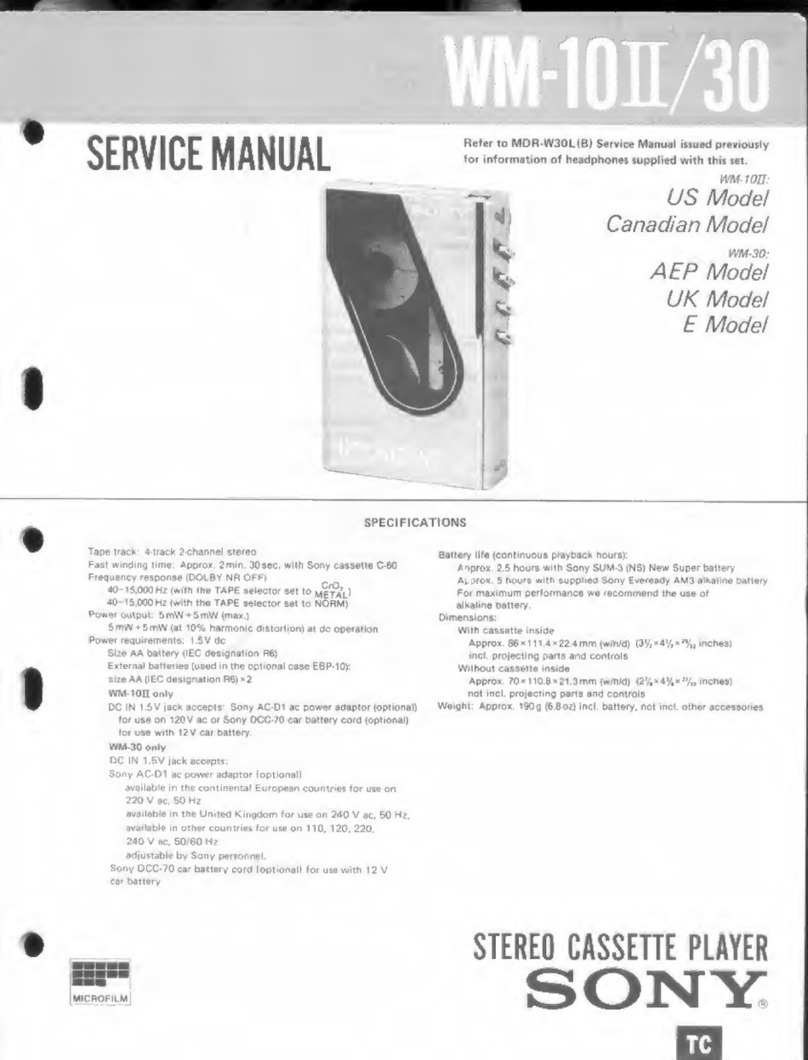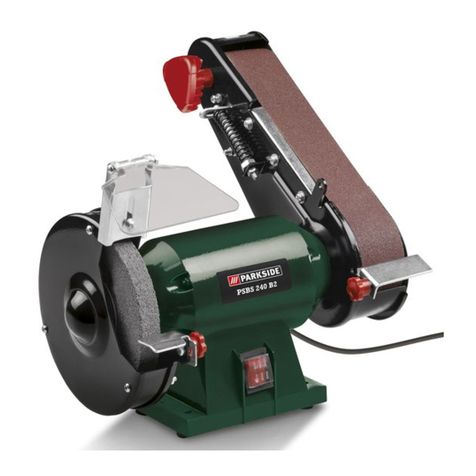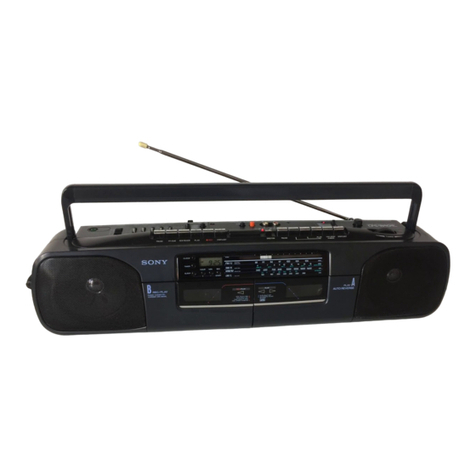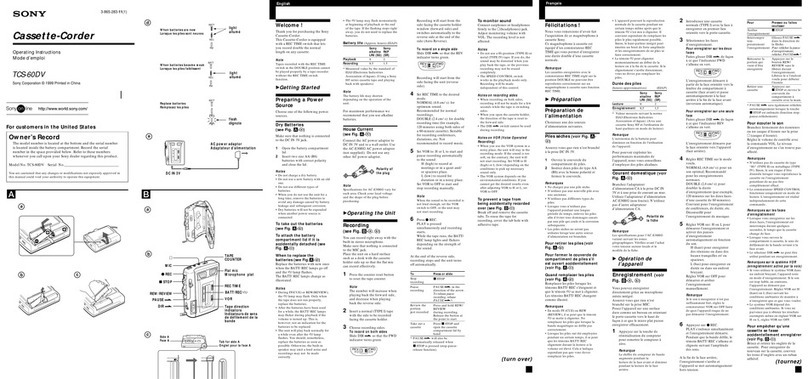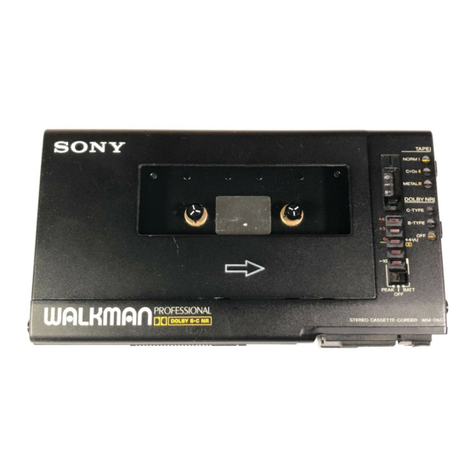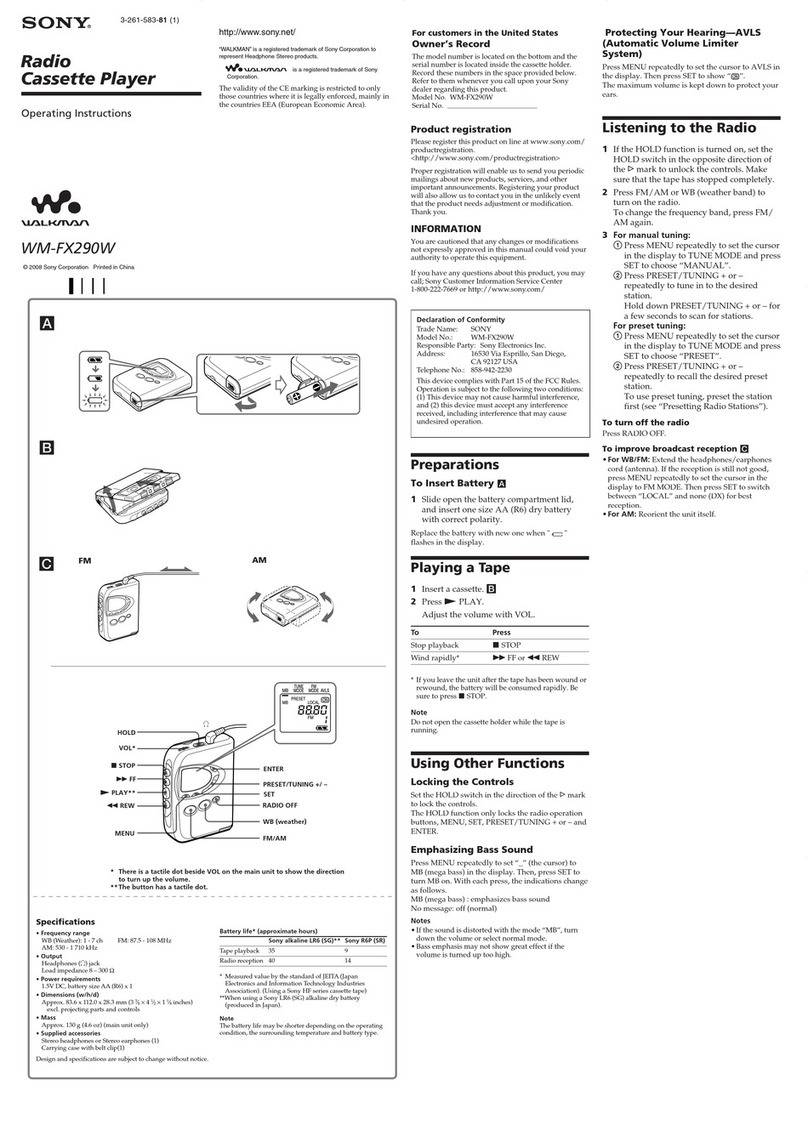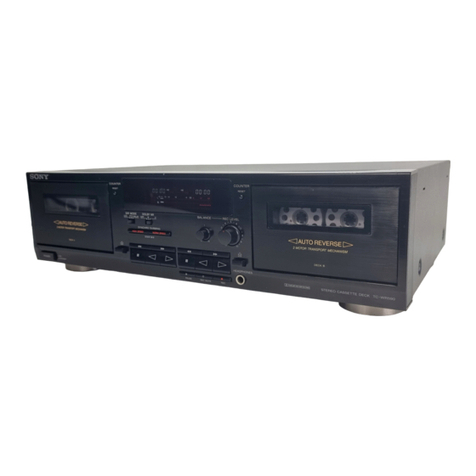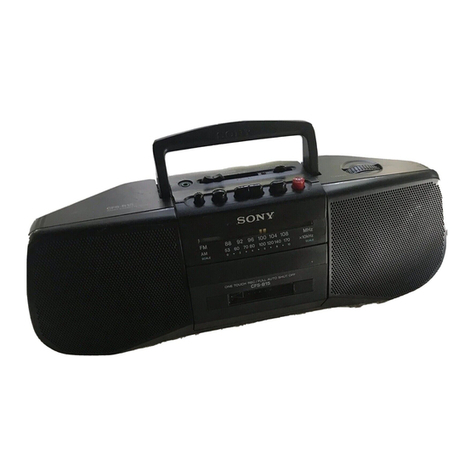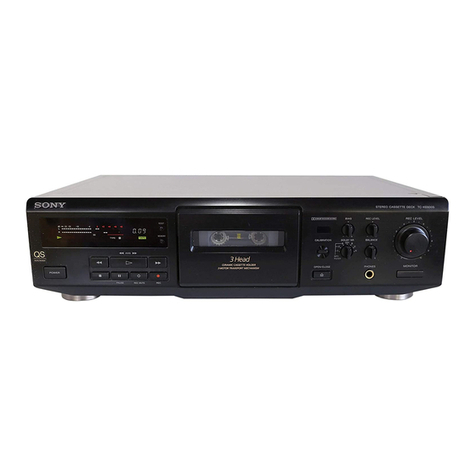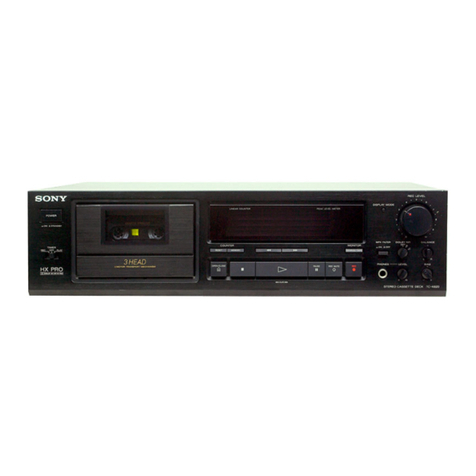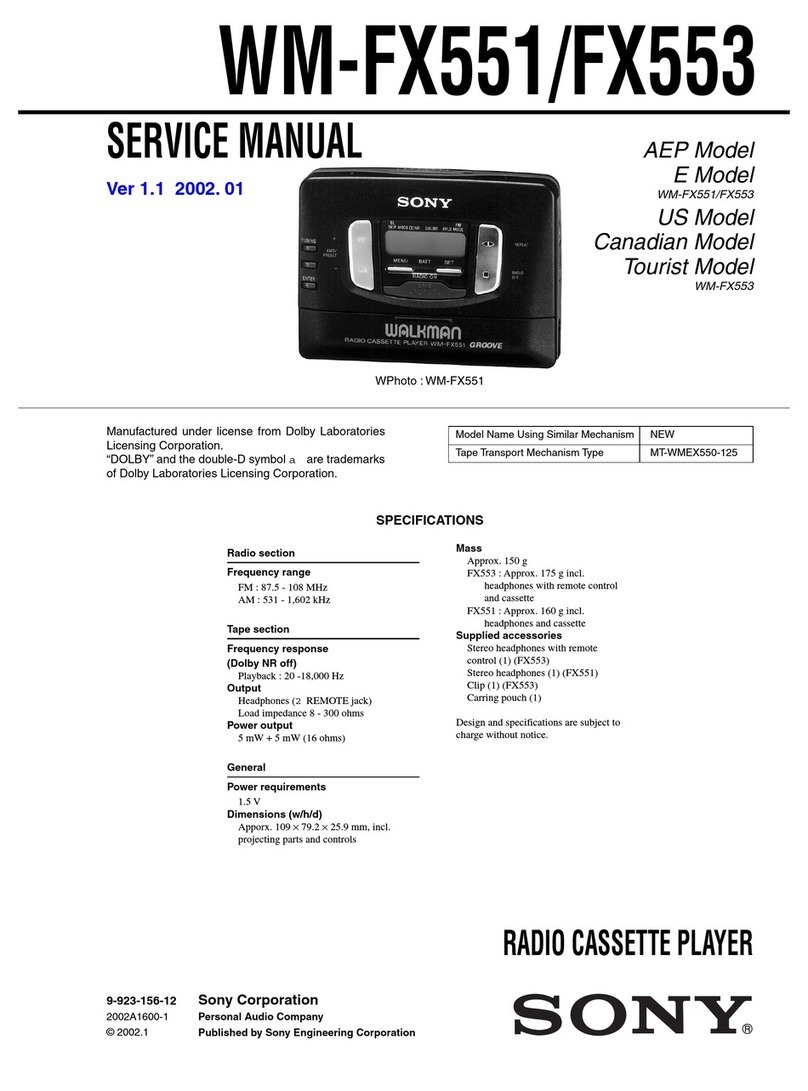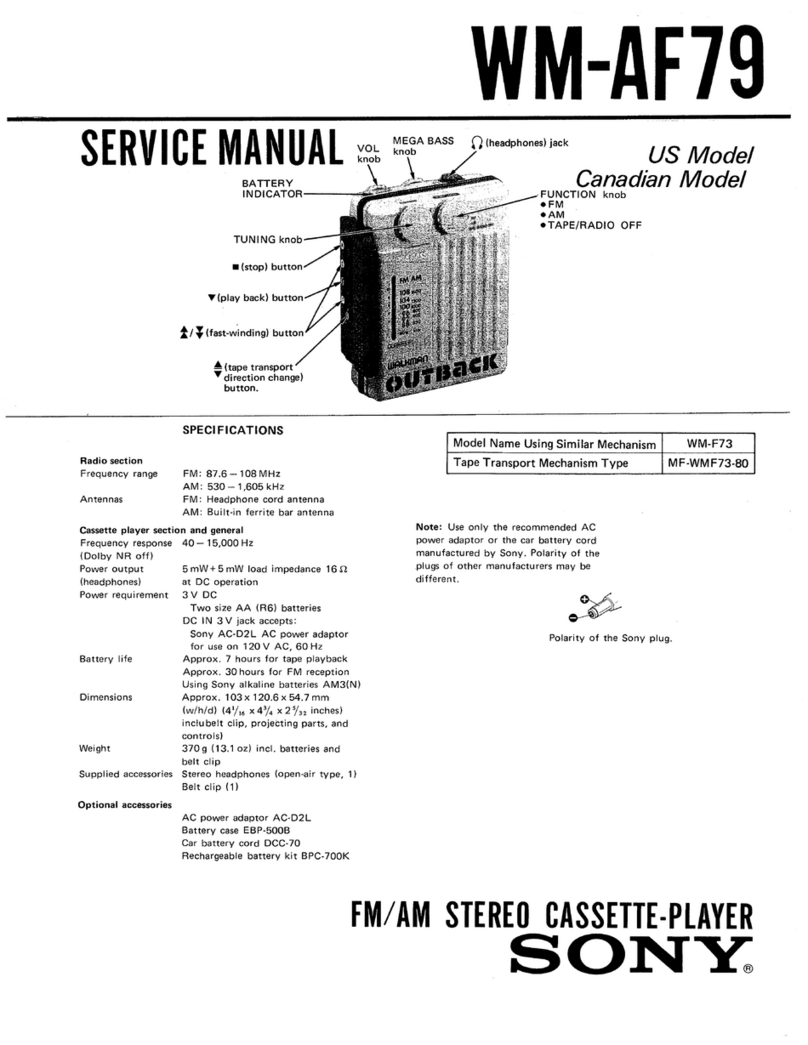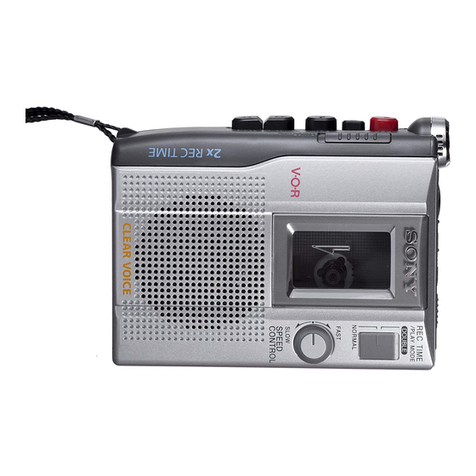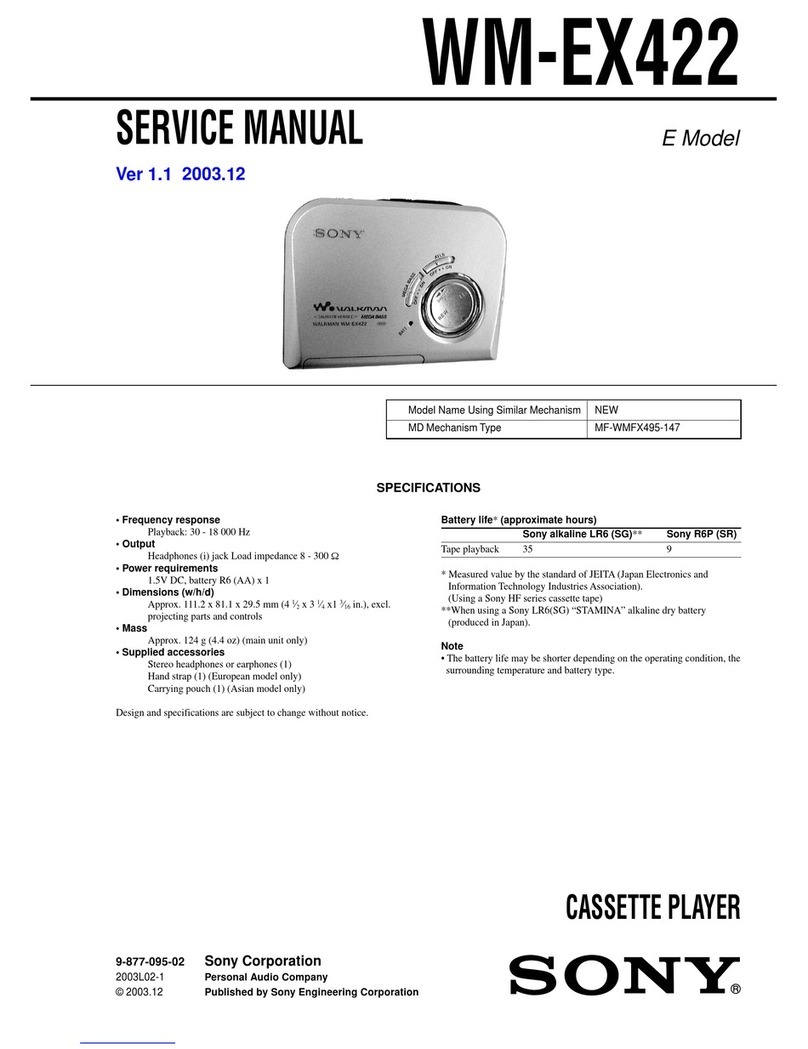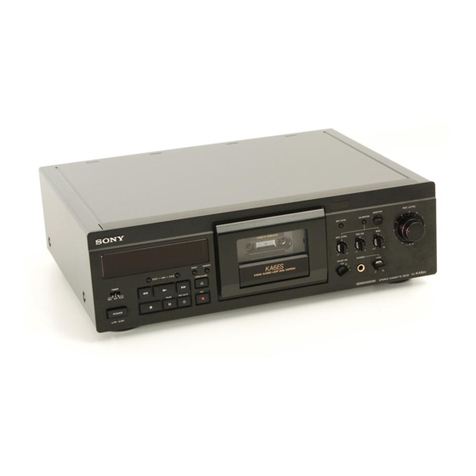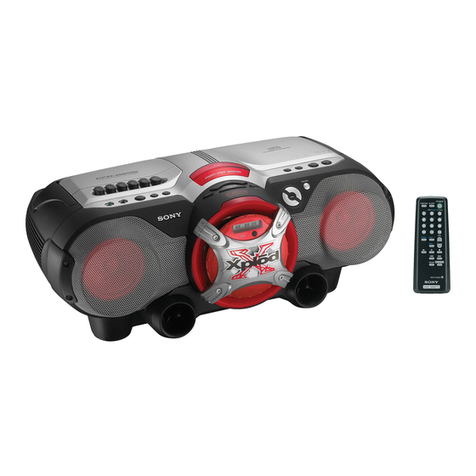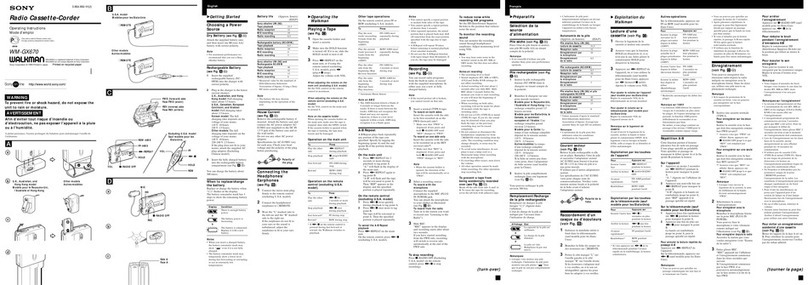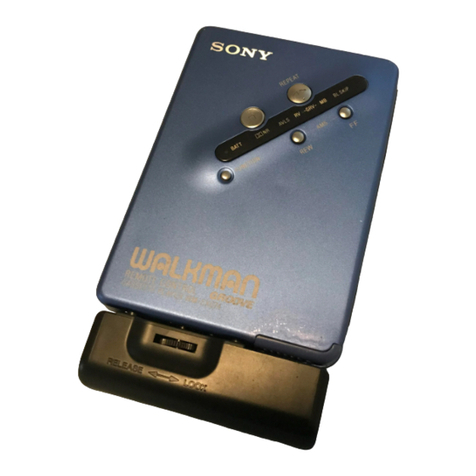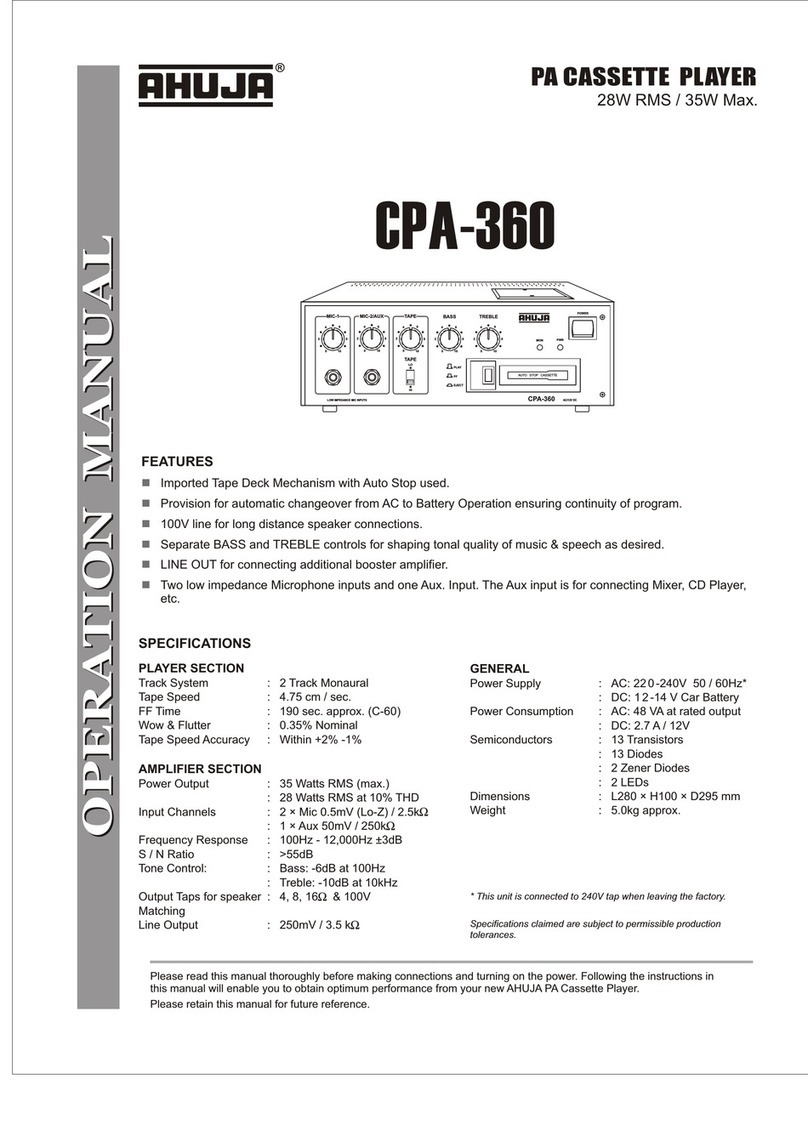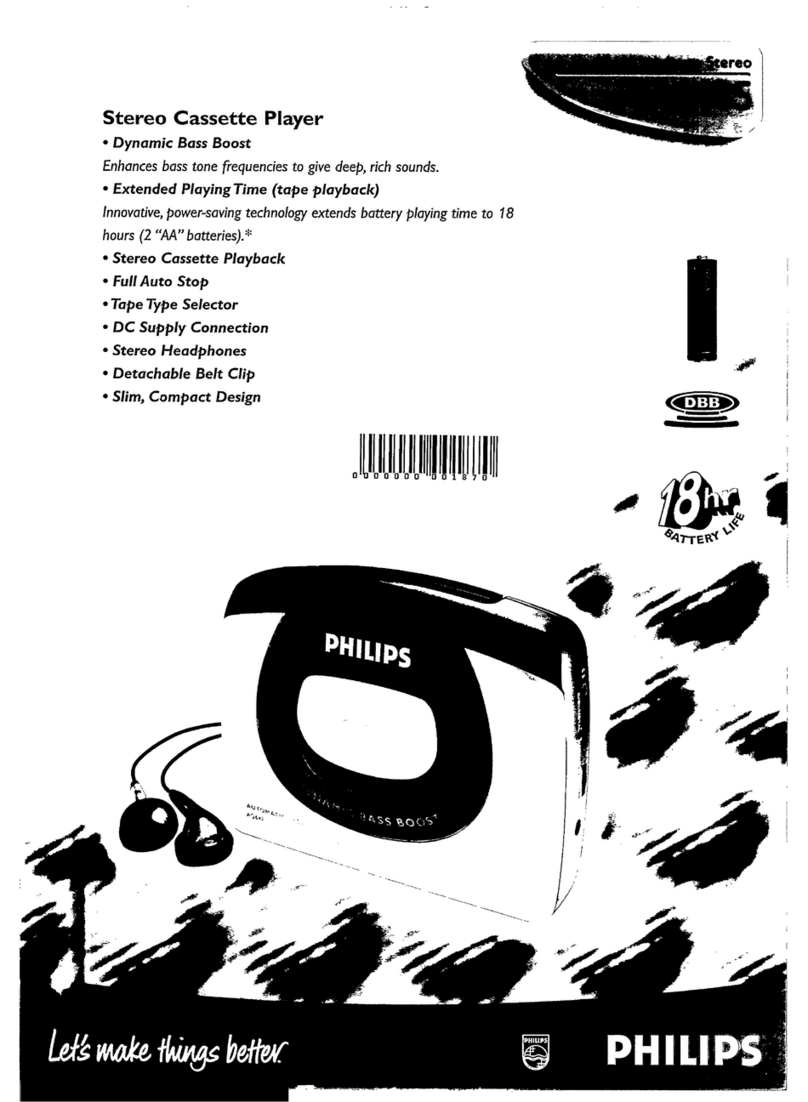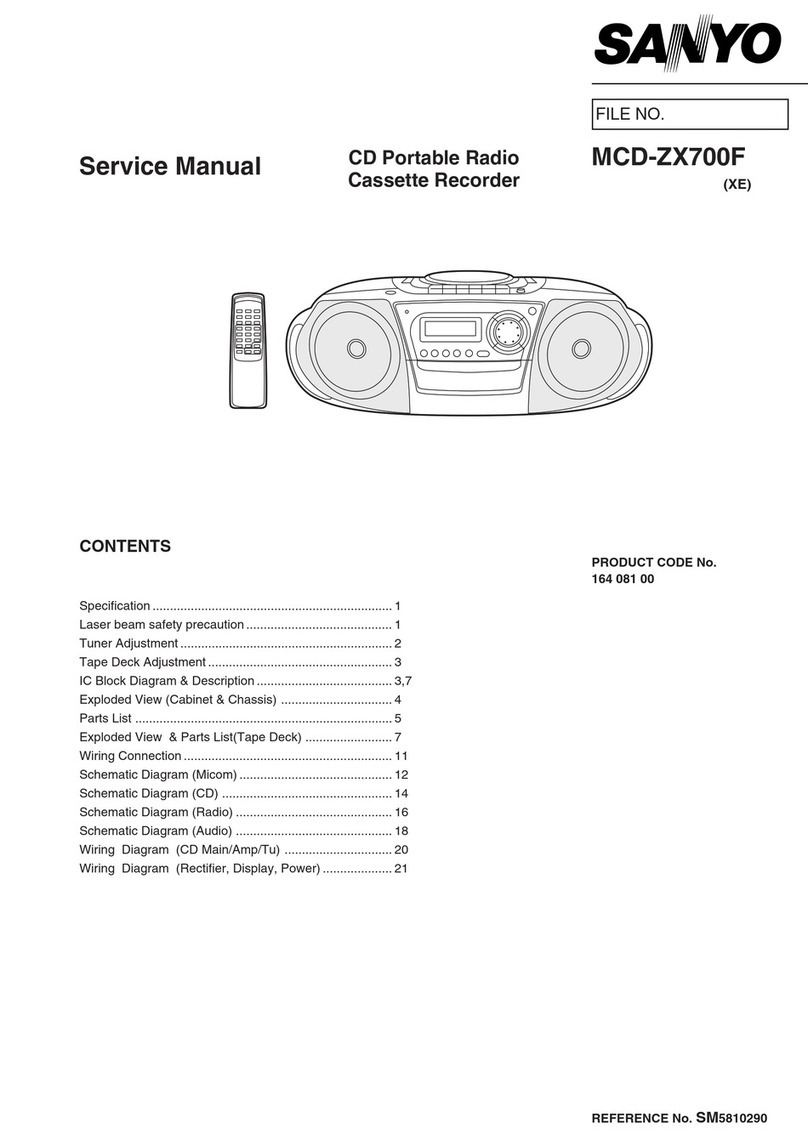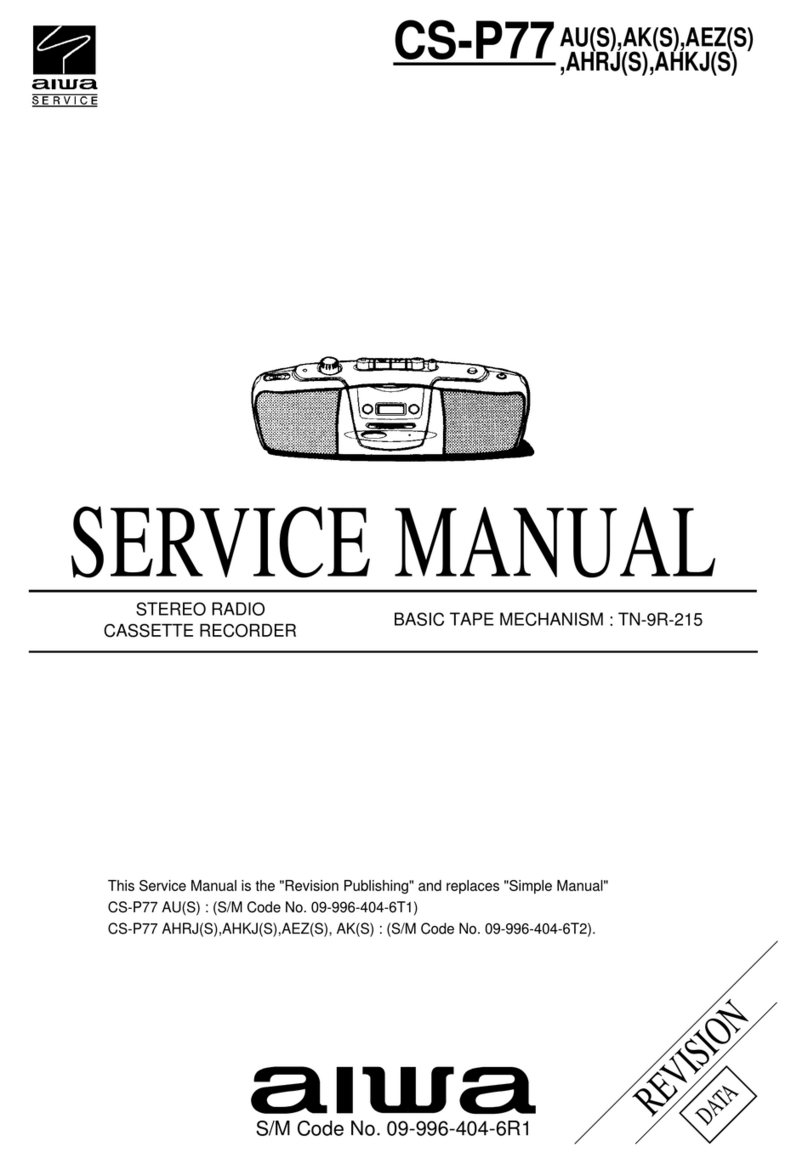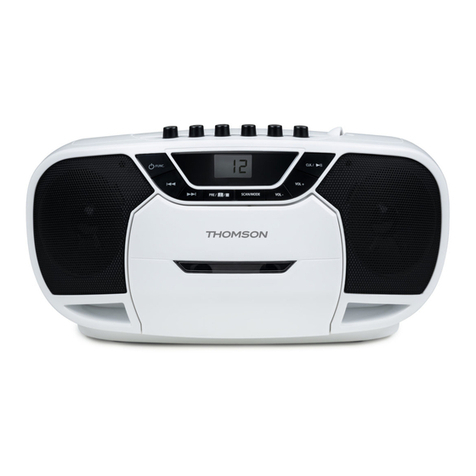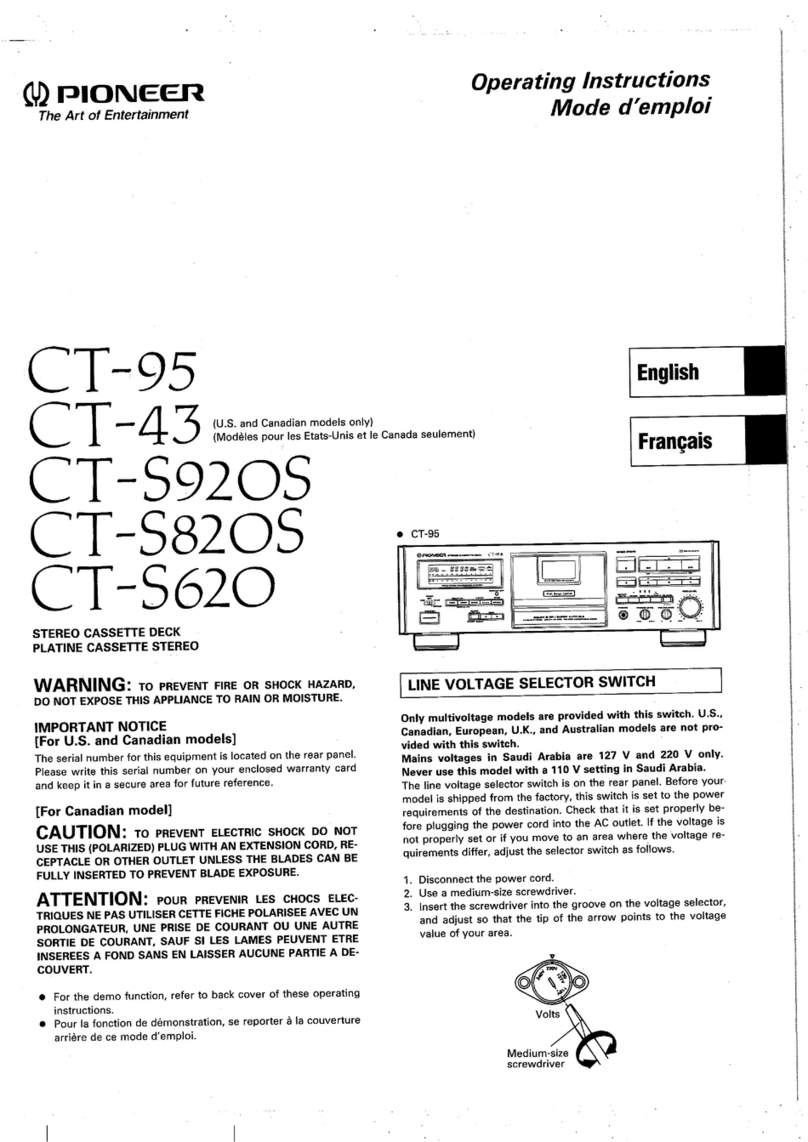
– 2 –
Wow and flutter
±0.13% W. Peak (IEC)
0.07% W. RMS (NAB)
±0.18% W. Peak (DIN)
Variable pitch range (approx.)
–30 to +30%
Inputs
Line inputs (phono jacks)
Sensitivity : 0.16 V
Input impedance : 47 kilohms
Outputs
Line outputs (phono jacks)
Rated output level : 0.5 V at a load impedance of
47 kilohms
Load impedance : Over 10 kilohms
Headphones (stereo phono jack)
Output level : 0.25 mW at a load impedance of
32 ohms
General
Power requirements
Where purchased Power requirements
US, Canadian 120 V AC, 60 Hz
AEP, UK, Chinese 220 - 230 V AC, 50/60 Hz
Australian 240 V AC, 50/60 Hz
Singapore, Malaysia 120/220/230 - 240 VAC, 50/60 Hz
Power consumption
30 W
Dimensions (approx.) (w/h/d)
Model for UK and Australian :
430 ×120 ×310 mm (w/h/d)
(17 ×4 3/4 ×12 1/4 in.)
Model for other countries :
430 ×120 ×290 mm (w/h/d)
including projecting parts and controls
Mass (approx.)
4.3 kg (9 lbs 8 oz)
Supplied accessories
Audio connecting cords (2 phono plugs - 2 phono
plugs) (2)
CONTROLA1 cord (supplied for Canadian models
only) (1)
Design and specifications are subject to change without
notice.
SAFETY-RELATED COMPONENT WARNING!!
COMPONENTS IDENTIFIED BY MARK !OR DOTTED LINE
WITH MARK !ON THE SCHEMATIC DIAGRAMS AND IN
THE PARTS LIST ARE CRITICAL TO SAFE OPERATION.
REPLACE THESE COMPONENTS WITH SONY PARTS WHOSE
PART NUMBERS APPEAR AS SHOWN IN THIS MANUAL OR
IN SUPPLEMENTS PUBLISHED BY SONY.
ATTENTION AU COMPOSANT AYANT RAPPORT
À LA SÉCURITÉ!!
LES COMPOSANTS IDENTIFIÉS PAR UNE MARQUE !SUR LES
DIAGRAMMES SCHÉMATIQUESETLA LISTE DESPIÈCESSONT
CRITIQUES POUR LA SÉCURITÉ DE FONCTIONNEMENT. NE
REMPLACER CES COMPOSANTS QUE PAR DES PIÈCES SONY
DONT LES NUMÉROS SONT DONNÉS DANS CE MANUEL OU
DANS LES SUPPLÉMENTS PUBLIÉS PAR SONY.
To Exposed Metal
Parts on Set
0.15
µ
F1.5k
Ω
AC
voltmeter
(0.75V)
Earth Ground
Fig. A. Using an AC voltmeter to check AC leakage.
SAFETY CHECK-OUT
After correcting the original service problem, perform the follow-
ing safety check before releasing the set to the customer:
Checkthe antennaterminals, metaltrim, “metallized” knobs,screws,
and all other exposed metal parts forAC leakage. Check leakage as
described below.
LEAKAGE TEST
The AC leakage from any exposed metal part to earth ground and
from all exposed metal parts to any exposed metal part having a
return to chassis, must not exceed 0.5 mA (500 microampers).
Leakage current can be measured by any one of three methods.
1. A commercial leakage tester, such as the Simpson 229 or RCA
WT-540A. Follow the manufacturers’ instructions to use these
instruments.
2. A battery-operated AC milliammeter. The Data Precision 245
digital multimeter is suitable for this job.
3. Measuring the voltage drop across a resistor by means of aVOM
or battery-operatedAC voltmeter. The “limit” indication is 0.75
V, so analog meters must have an accurate low-voltage scale.
The Simpson 250 and Sanwa SH-63Trd are examples of a pas-
sive VOM that is suitable. Nearly all battery operated digital
multimeters that have a 2V AC range are suitable. (See Fig. A)
